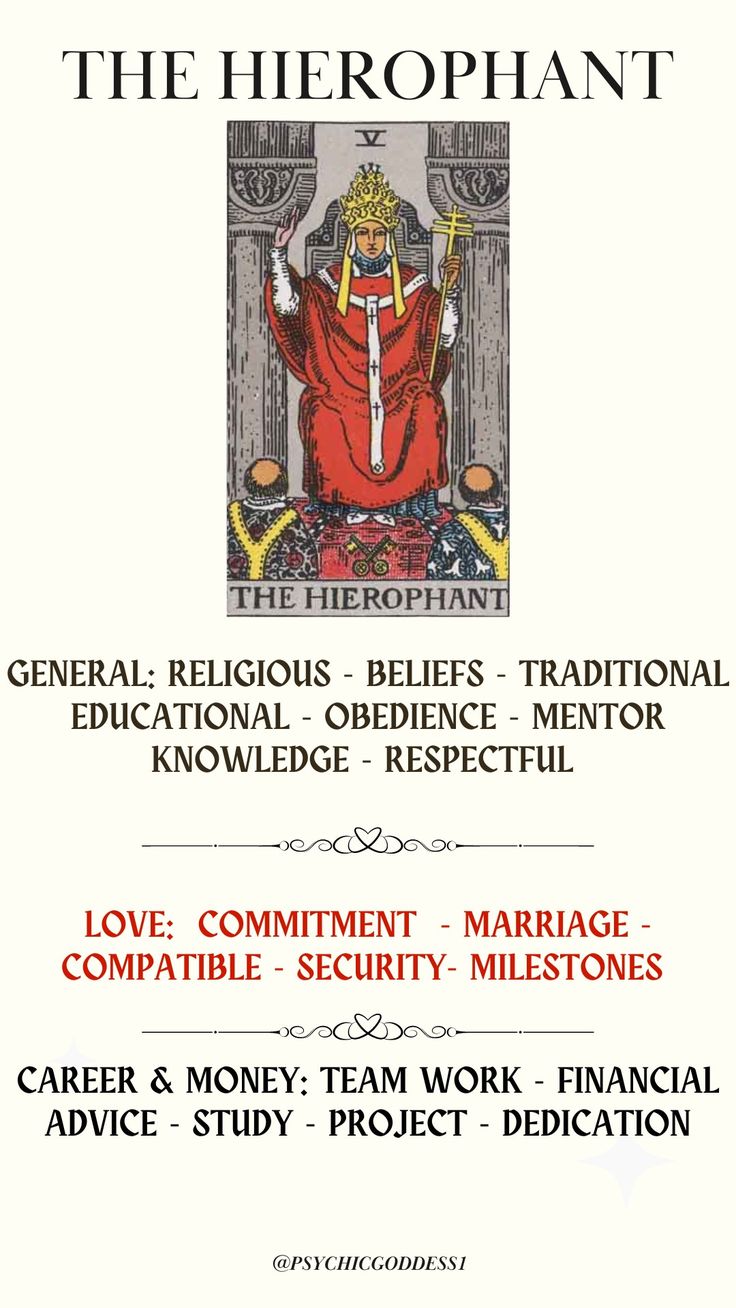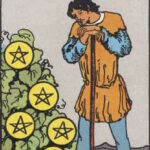The Hierophant tarot card, often depicted as a religious figure or a spiritual teacher, embodies a multitude of complex themes that resonate deeply with various cultural and spiritual traditions, particularly within the Christian context. The card itself is rich with symbolism, representing divine wisdom, tradition, and the spiritual authority that guides adherents on their journey through faith. Through examining this card from a Christian perspective, we can discern not just its literal significance but also its deeper implications and the fascination it elicits among practitioners and scholars alike.
At first glance, The Hierophant appears to be an intermediary between the divine and the earthly realm. He sits upon a throne, often flanked by two pillars that symbolize duality and balance. In Christian iconography, this figure can be likened to a priest or a pope, whose role is to impart spiritual knowledge and uphold ecclesiastical traditions. This connection illustrates a fundamental aspect of Christian spirituality: the necessity of guidance in faith. Just as followers look to their clergy for interpretations of scripture and dogma, The Hierophant serves a similar role in the broader context of spiritual exploration.
Delving deeper, The Hierophant’s significance extends beyond mere representation of authority; he encapsulates the essence of conformity versus individualism in spiritual practice. Within Christianity, there is often a tension between rigid adherence to tradition and the pursuit of personal faith. This tension is elegantly mirrored in the card’s messages. The Hierophant can encourage adherence to sacred teachings and ritual, which are crucial for maintaining the community’s integrity. Concurrently, the card may remind seekers of the importance of personal interpretation and the risk of dogma stifling one’s spiritual growth. In essence, The Hierophant advocates for a balanced approach—upholding tradition while embracing spiritual individuality.
Another noteworthy aspect of The Hierophant is its association with the concept of community. The Christian faith is deeply communal, with believers coming together to worship, learn, and support one another. This is vividly reflected in the imagery of the card. The Hierophant, often surrounded by followers or congregants, signifies the importance of communal structures within faith. This embodies the idea that faith is not merely a solitary endeavor but rather a collective journey—one that flourishes in the nurturing embrace of community and shared beliefs.
The card also invites contemplation on the role of education in spiritual development. Historically, church figures have been central in disseminating religious teachings and philosophical knowledge. Education manifests in various forms, from scriptural study to moral instruction. The Hierophant represents this commitment to learning, emphasizing that knowledge is paramount for spiritual evolution. In Christianity, scriptural literacy is crucial; knowing the Bible allows believers to engage more meaningfully with their faith and understanding of divine will.
Fascination with The Hierophant card is amplified by its dual role as both guide and gatekeeper. This card compels one to consider the potential dichotomy of seeking guidance and succumbing to dogmatic constraints. In the Christian context, the card may invite introspection into how believers navigate their faith—distinguishing between the acceptance of spiritual authority and the quest for personal enlightenment. In bringing this balance to light, The Hierophant becomes a conduit for both homage to tradition and an invitation to personalized faith experiences.
Furthermore, The Hierophant can also be viewed through the lens of moral and ethical guidance. A significant component of Christian doctrine involves the establishment of a moral compass that aligns with God’s teachings. The Hierophant, as a symbol of spiritual authority, dictates that morality is often rooted in tradition, scripture, and the cumulative wisdom of the faith community. The interplay between ethical guidance and personal conviction is a recurring theme in the life of many believers, making the card’s message particularly pertinent in today’s rapidly changing moral landscape.
A noteworthy observation in studying The Hierophant is its invitation to challenge preconceived notions regarding spirituality and authority. In an age where individualism often reigns supreme, the discomfort with traditional authority figures emerges as a common thread. The Hierophant, by representing established religious institutions, forces individuals to confront their feelings about faith, skepticism, and the reliance on spiritual leaders. This tension makes The Hierophant a subject of perpetual fascination, as it encapsulates the universal struggle between seeking authority and embracing personal faith.
The card also stirs curiosity about the intersection of faith and ritual. Christianity has a rich tapestry of rituals that celebrate faith—from baptism to communion, each carries profound significance. The Hierophant symbolizes the importance of ritual in maintaining spiritual connection and community bonding. Engaging in these practices not only strengthens individual belief but also fortifies communal ties, illuminating the profound role that The Hierophant serves within the relational dynamics of spirituality.
In conclusion, the meaning of The Hierophant tarot card, particularly through a Christian lens, goes far beyond the surface-level interpretations. It serves as a poignant reminder of the balance between tradition and individualism, the necessity of communal ties, and the vital role of education and moral guidance in the journey of faith. The fascination surrounding The Hierophant stems from these multifaceted themes, prompting believers to explore their relationship with authority, tradition, and personal spirituality. In exploring this card, one uncovers not only the layers of meaning it offers but also the personal revelations it can provoke within the complex interplay of faith-based life.









Leave a Comment